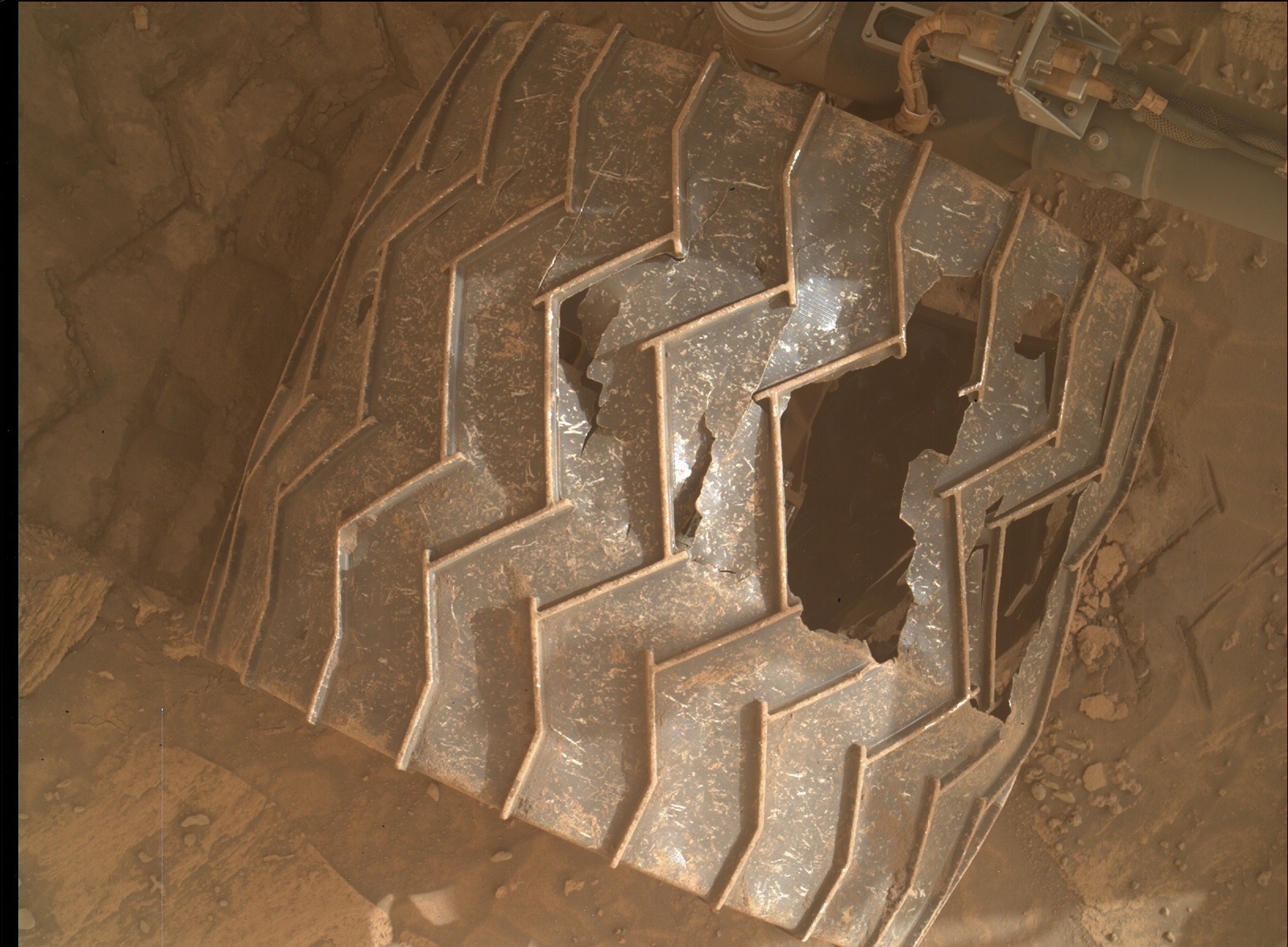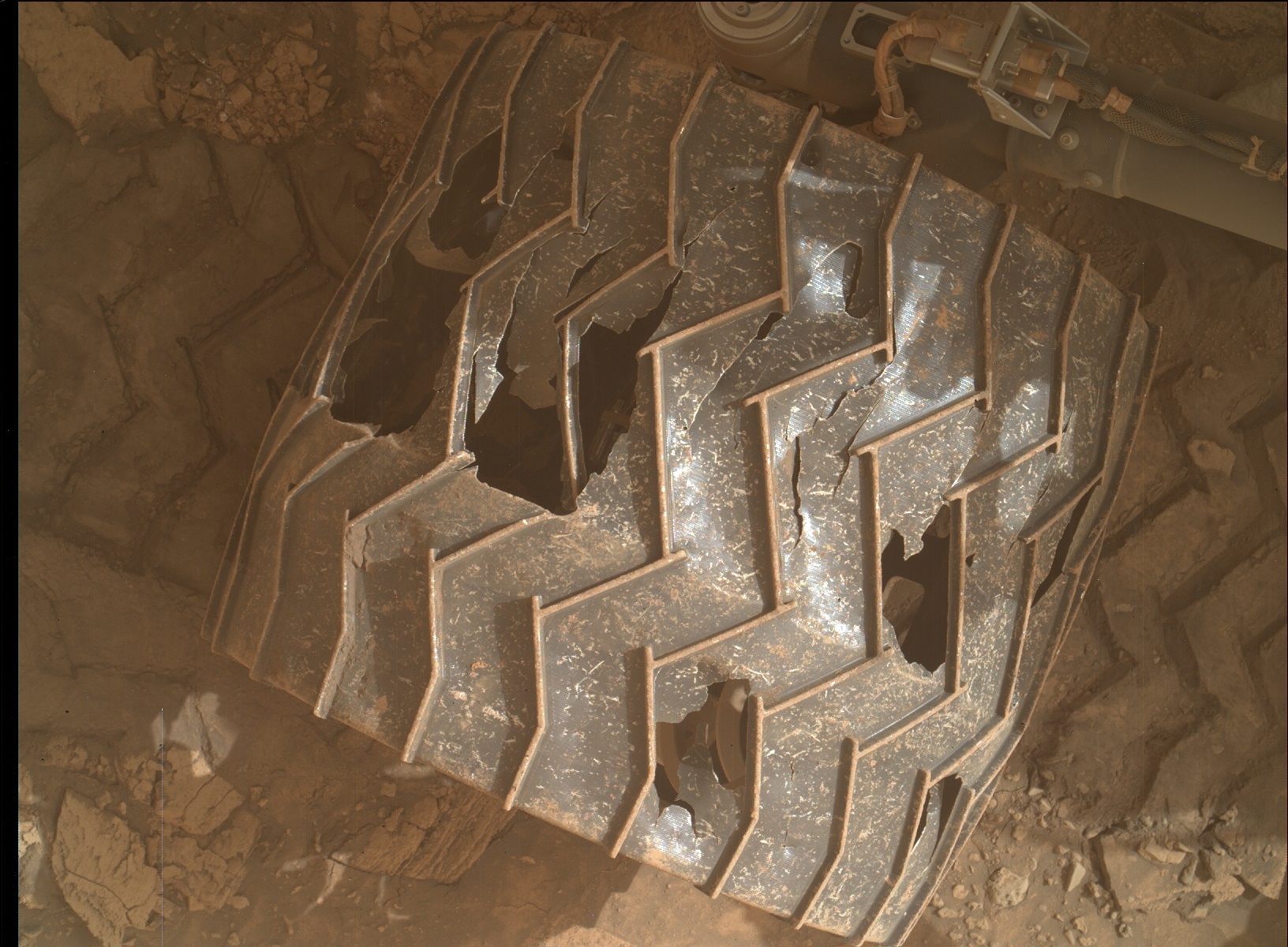Rugged Mars has taken big bites out of the Curiosity rover's wheels (photos)

NASA's Curiosity rover has left plenty of marks on Mars over the past nine-plus years, and the Red Planet is returning the favor.
The rugged landscape inside Mars' Gale Crater has taken some substantial bites out of Curiosity's six aluminum wheels, as CNET recently pointed out. The damage looks dramatic, but don't panic; Curiosity should be able to keep trundling along for a while yet.
"The current predicted odometry remaining is expected to be sufficient to support Curiosity throughout the remainder of the mission," Andrew Good, a spokesman for NASA's Jet Propulsion Laboratory (JPL) in Southern California, which manages Curiosity's mission, told Space.com via email.
The gouges and gashes on the rover's wheels "always look nastier than they are," Good added.
Related: Amazing Mars photos by NASA's Curiosity rover

The car-sized Curiosity landed on Gale's floor in August 2012, on a mission to determine if the area could ever have supported microbial life. The robot soon answered that question, finding that Gale hosted a potentially habitable lake-and-stream system in the ancient past that likely persisted for millions of years at a time.
Since September 2014, Curiosity has been climbing the flanks of Mount Sharp, which rises 3.4 miles (5.5 kilometers) into the sky from Gale's center. The rover is reading the rock layers as it goes, searching for clues about Mars' long-ago shift from a relatively warm and wet world to the frigid desert planet we know today.
Breaking space news, the latest updates on rocket launches, skywatching events and more!
Curiosity has traveled a total of 16.86 miles (27.14 km) on Mars to date, many of them across rugged, rocky terrain. The rover's wheels started showing signs of wear and tear relatively early in the mission, spurring its handlers to take some mitigation measures — picking routes across gentler terrain when possible, for example, and eventually beaming up "traction control" software that adjusts Curiosity's speed depending on the type of ground it's traversing.
Those measures seem to have worked, Good said, noting that the mission team recently started snapping wheel-inspection imagery every 3,300 feet (1,000 meters) of ground traveled rather than every 1,650 feet (500 m), as had been the norm.
Curiosity's wheel-wear experiences helped shape the design of NASA's next Mars rover, Perseverance, which touched down on the floor of Jezero Crater in February 2021. For example, Perseverance's wheels are slightly larger in diameter and have twice as many treads as those of Curiosity.
In addition, the life-hunting, sample-caching Perseverance's treads are gently curved instead of chevron-shaped. And they don't spell out "JPL" in Morse code on the red dirt as the rover drives, like those of Curiosity were designed to do.
Mike Wall is the author of "Out There" (Grand Central Publishing, 2018; illustrated by Karl Tate), a book about the search for alien life. Follow him on Twitter @michaeldwall. Follow us on Twitter @Spacedotcom or on Facebook.

Michael Wall is a Senior Space Writer with Space.com and joined the team in 2010. He primarily covers exoplanets, spaceflight and military space, but has been known to dabble in the space art beat. His book about the search for alien life, "Out There," was published on Nov. 13, 2018. Before becoming a science writer, Michael worked as a herpetologist and wildlife biologist. He has a Ph.D. in evolutionary biology from the University of Sydney, Australia, a bachelor's degree from the University of Arizona, and a graduate certificate in science writing from the University of California, Santa Cruz. To find out what his latest project is, you can follow Michael on Twitter.
